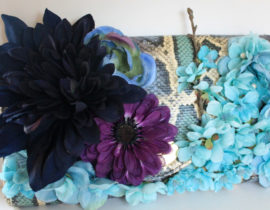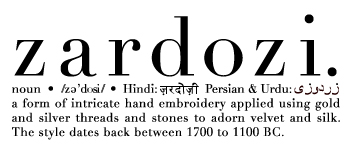Rangolis add a burst of colour during Diwali and wedding festivities. The pretty patterns can be made with flowers, seeds, glitter, powder, and sand. There is also an endless variety of styles and shapes, so we wanted to share our little tricks for making a rangoli that will have everyone wanting to recreate the same.
Here’s What you Will Need
-
Coloured sand
-
Pencil
-
String
-
Glue gun
-
Decorative stones and gems
-
Ruler
Whenever our grandmother went to India, she would pick up these rangoli books for us, which made it easier to create elaborate patterns.
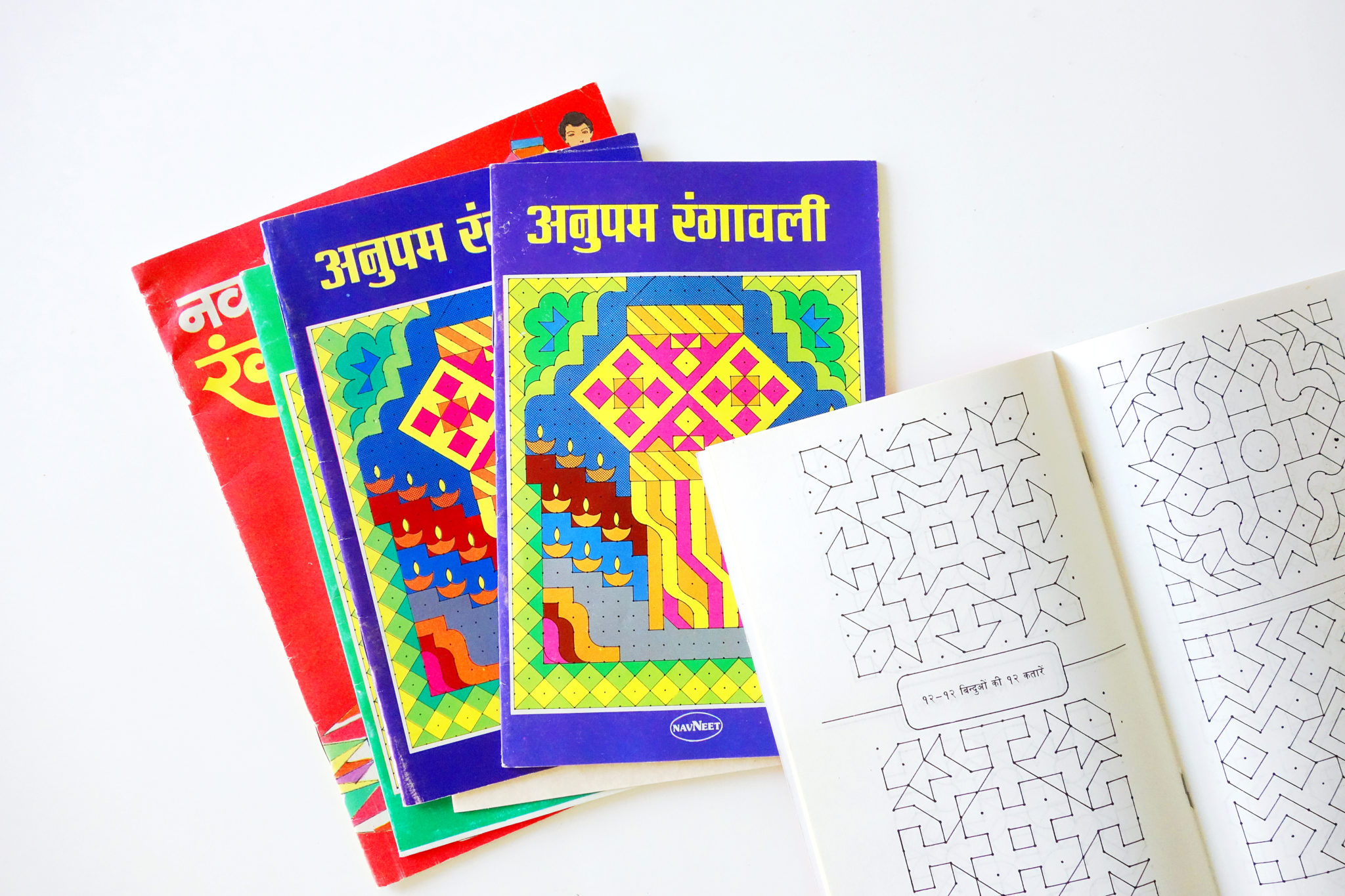
Each design is laid out in a grid pattern that you just draw out on a bristol board using a pencil and ruler. It does not matter if you make mistakes, since everything will be covered later with colored sand. Once you have created the design, cut around the edges of the rangoli.
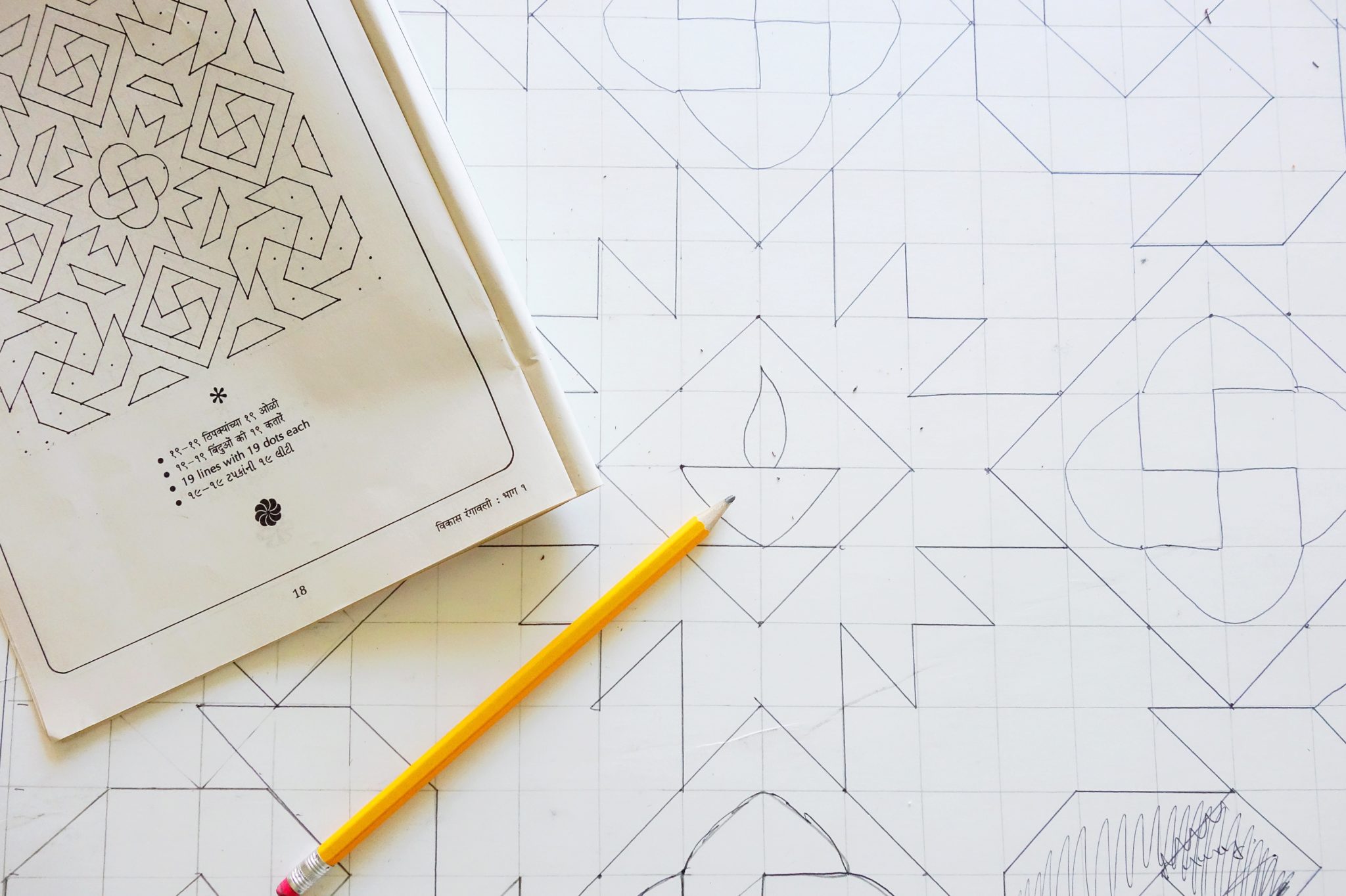
Cover each line with decorative string using a glue gun. The thicker the string, the better since it will hold the sand within the lines. Put a thicker beaded or woven string all around the border of the rangoli to add visual interest.
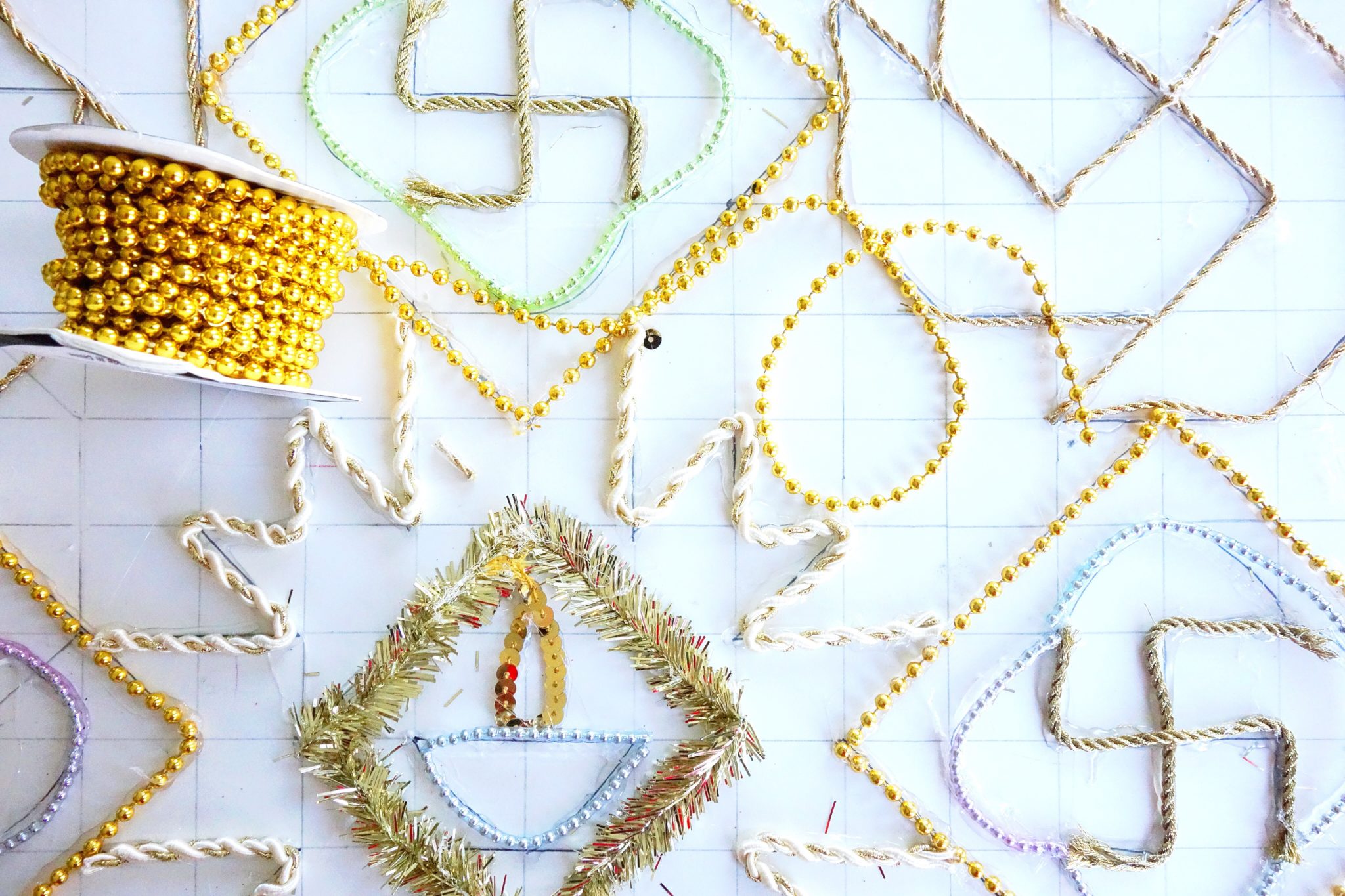
Fill each space with sand or powder which is easy to find in most craft stores and Indian shops.

The nice thing about creating a rangoli on a bristol board is that when the event is over, you can shake off the excess sand and use the design again.
Rangolis are traditionally placed on the floor near the front of the house, combining elements like peacocks, swans and flowers, but you can be as creative as you want. Many Diwali rangolis include a swastik which may alarm some of your friends who could associate it with evil. But it is really an ancient Hindu symbol that represents peace. It has even got a scientific meaning relating to the creation of the earth when the Big Bang occurred, exploding in the sky like a swastik shaped firecracker.
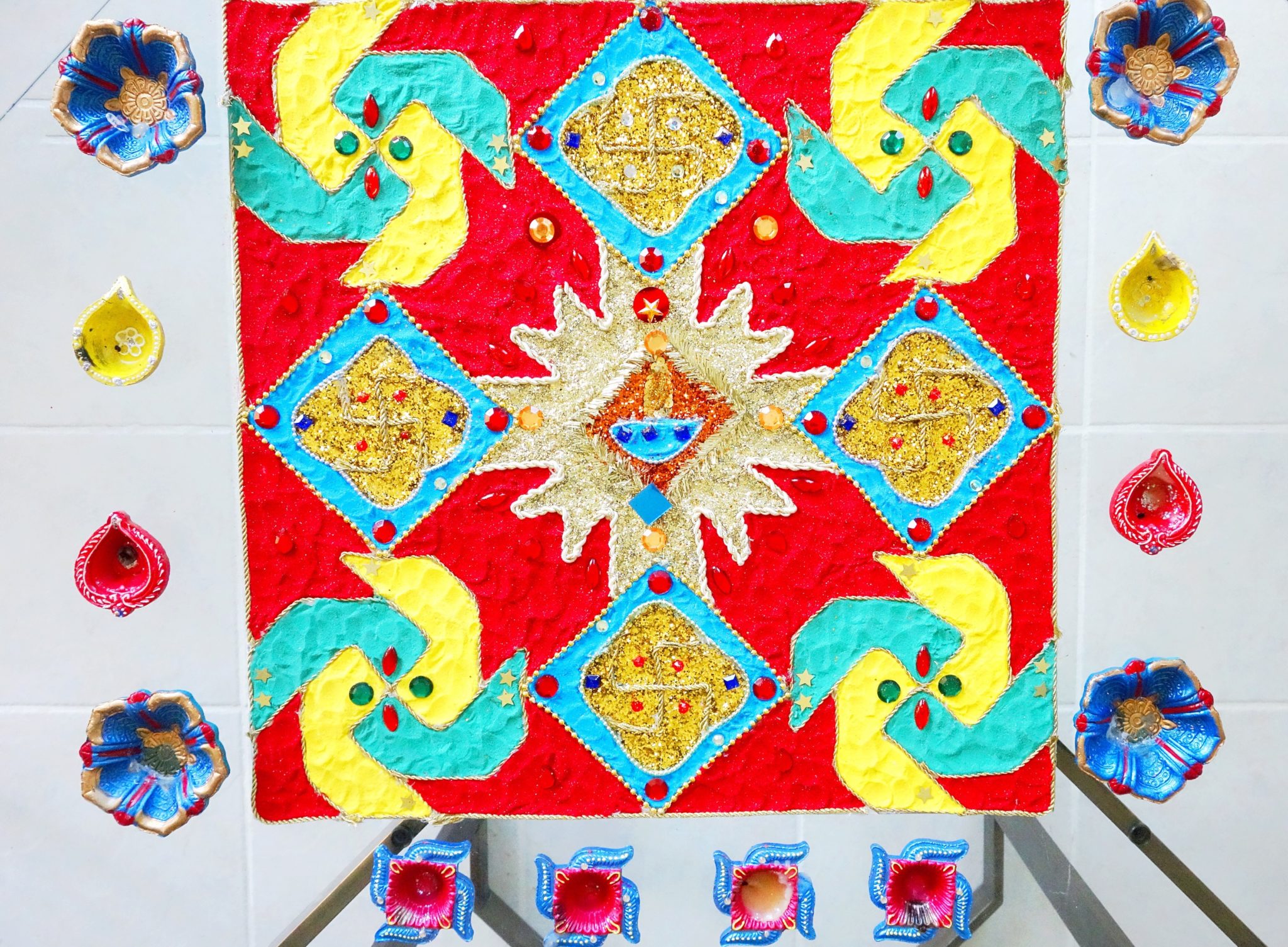
We partnered with Zulily to share some more entryway ideas for a world traveler.

